PythagorasPythagoras was an ancient Greek philosopher. He was born in 570 BC, in Samos (Greece), and died in 495 BC, in Metapontum (Italy). His full name was Pythagoras of Samos. He was credited with many discoveries in the field of science, mathematics, music, astronomy, and medicine. The discoveries done by him are, Pythagorean or Pythagoras theorem, Pythagorean tuning, Theory of proportions, Sphericity of the earth, the identity of planet Venus, and five regular solids. He also divided the globe into five climatic zones. He had given the main credit for the discovery and proof of Pythagoras theorem. Pythagoras or Pythagorean TheoremPythagoras theorem is based on the right-angled triangle or right triangle only. The theorem states that in a right triangle, the sum of the square of base and perpendicular is equal to the square of the hypotenuse. In other words ,in a right triangle, the square of the hypotenuse is equal to the sum of the square of the two legs. The legs (base and perpendicular) are the sides of a triangle that forms the right-angle. Components of Right TriangleThe following figure represents a right triangle ∆ABC. 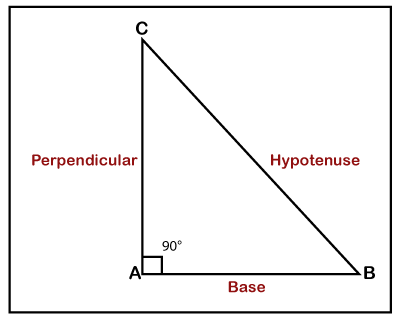
Pythagoras TriplesPythagoras or Pythagorean triples is a set of three positive integers that satisfies the Pythagoras theorem. The least Pythagorean triple is (3, 4, 5). In ∆ABC, (a, b, c) is the Pythagoras triples that represent positive integer value and satisfy the theorem.
a2+b2=c2
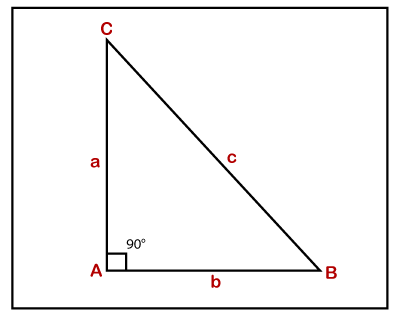
The following table enlists some Pythagorean triples.
Facts about Pythagoras Triples
Pythagoras Theorem FormulaConsider the following figure. 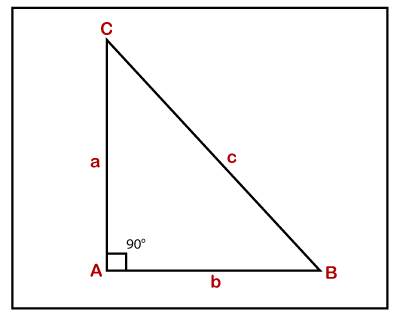
In ∆ABC, AC is perpendicular or height, AB is base, and BC is the hypotenuse. The length of perpendicular, base, and hypotenuse is a, b, and c, respectively. According to the Pythagoras theorem, the Pythagoras theorem formula can be written as:
Perpendicular2 + Base2 = Hypotenuse2
Or
AC2+ AB2 = BC2
Or
a2+ b2 = c2
Pythagoras Theorem ProofTo Prove: AC2 = AB2+ BC2 Given: A right triangle ∆ABC. Proof 1:In the following figure, we have drawn a perpendicular (BD) from point B that meets at point D on the hypotenuse. 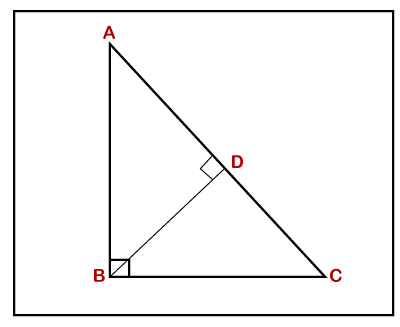
The perpendicular divides the triangle into two triangles, i.e., ∆ADB and ∆BDC. Remember: If we draw a perpendicular from the vertex of the right-angle, the triangles on both sides are equals to each other and also equal to the whole triangle. According to the above statement, ∆ABC=∆ADB 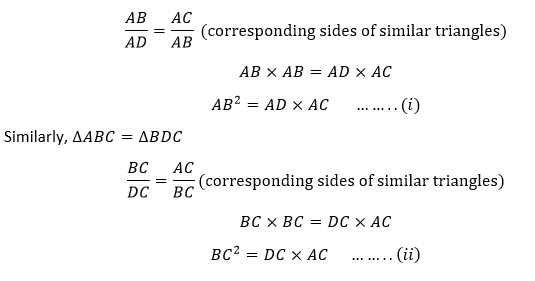
Adding the equations (i) and (ii), we get: AB2+BC2=AD×AC+DC×AC
AB2+BC2=AC2
Hence, the Pythagoras theorem is proved. Let's see the second way to prove the theorem. Proof 2:In the following figure, we have drawn a square ABCD. Inside the square ABCD, we have drawn another square EFGH that forms four triangles ∆AEF, ∆FDG, ∆GCH and ∆HBE. 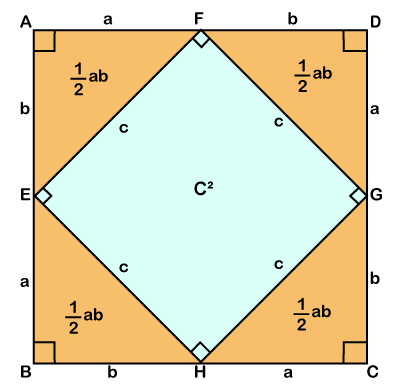
Now, we will find the area of both squares and triangles, separately. We know that, the area of square = a2 (where a is the side of the square) Area of square ABCD=(a+b)2 We know that, area of triangle = Area of a triangle= There are a total of four triangles, so the area of four triangles will be: Area of four triangles= 4× Area of square EFGH=c2 (where c is the side of the square EFGH) The total area of the square ABCD will be: Area of ABCD = Area of Square EFGH + Area of four triangles Putting the values, we get: (a+b)2=c2+2ab Cancel out the 2ab on both sides, we get:
a2+b2=c2
Hence, the theorem is proved. Pythagoras Theorem ProblemsExample 1: The three sides of a triangle are 5, 12, and 13 cm. Use the Pythagoras theorem and check that the triangle is a right triangle or not. Solution: Given, AB = 12 cm, BC = 5 cm, AC = 13 cm 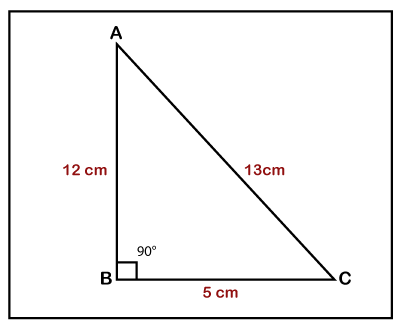
According to the Pythagoras theorem, AC2=BC2+AB2 132=52+122 Hence, the triangle is a right triangle. Example 2: Find the value of AC if the length of the base is 3 cm, and the height of the triangle is 4 cm. 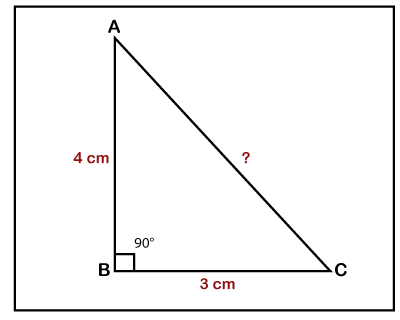
Solution: In the ∆ABC, given that BC = 3 cm and AB = 4 cm. According to the Pythagoras theorem, BC2+AB2=AC2 Putting the values of AB and BC in the above formula, we get: 32+42=AC2 Hence, the length of the hypotenuse is 5 cm. Example 3: Find the value of the base. If the length of the hypotenuse 10 cm and height of the triangle is 8 cm. 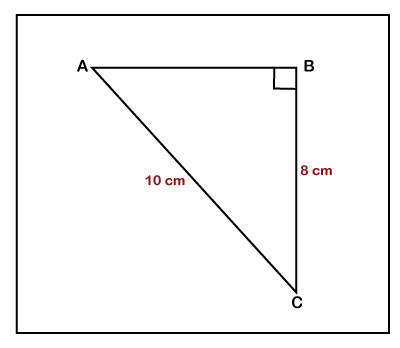
Solution: In the ∆ABC, given that AC = 10 cm and BC = 8 cm. According to the Pythagoras theorem, BC2+AB2=AC2 Putting the values of AC and BC in the above formula, we get: 102=82+AB2 Hence, the length of the base is 6 cm. Example 4: The length of the base and hypotenuse is 30 and 50 cm, respectively. Find the height of the triangle. 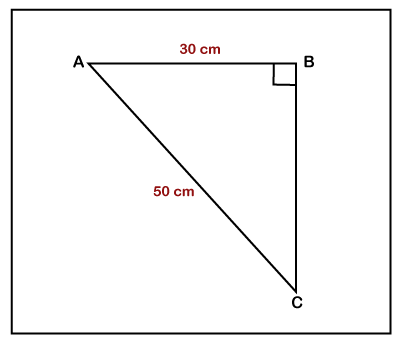
Solution: In the ∆ABC, given that AC = 50 m and AB = 30 m. According to the Pythagoras theorem, AC2=BC2+AB2 Putting the values of AC and AB in the above formula, we get: 502=BC2+302 Hence, the height of the triangle is 40 m. Example 5: If a side of the squared stone is 9 m. Find the length of the diagonal. Solution: 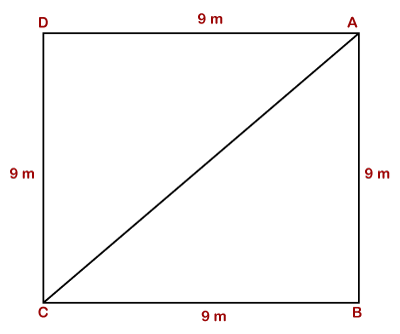
In the above figure, we see that there are two triangles ∆ABC and ∆ADC. Let's take the triangle ∆ABC and find the diagonal. According to the Pythagoras theorem, AC2=BC2+AB2 AC2=92+92 Hence, the length of the diagonal is 9√2 m.
Next TopicLeast Common Multiple
|
 For Videos Join Our Youtube Channel: Join Now
For Videos Join Our Youtube Channel: Join Now
Feedback
- Send your Feedback to [email protected]
Help Others, Please Share





 bh
bh




